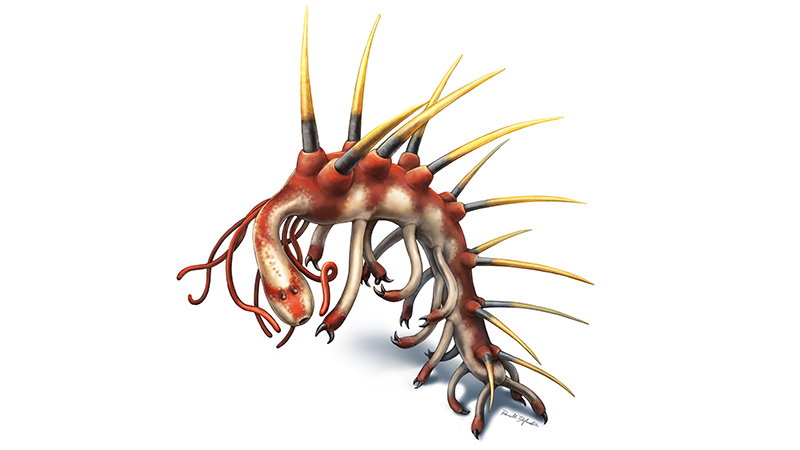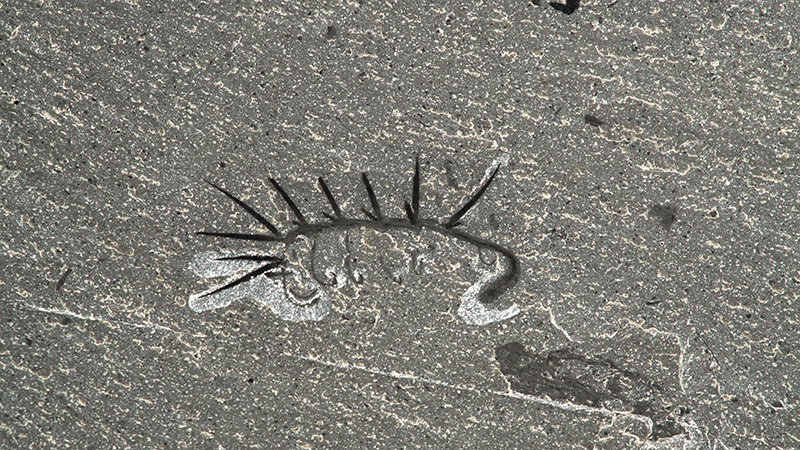The restudy of the iconic Hallucigenia animal from Burgess Shale
New research published today in the journal Nature describes a newly-discovered 'ring of teeth' in an otherworldly creature from half a billion years ago.
Researchers from the University of Cambridge, the Royal Ontario Museum and the University of Toronto have found that the creature, known as Hallucigenia due to its strange appearance, had a throat lined with needle-like teeth, a previously unidentified feature which could help connect the dots between it, modern velvet worms and arthropods – the group which contains modern insects, spiders and crustaceans. Read the full press reslease.

Hallucigenia was just one of the weird creatures that lived during the Cambrian Explosion, a period of rapid evolutionary development starting about half a billion years ago, when most major animal groups first emerge in the fossil record. Visit The Burgess Shale website to learn more about one of the world’s first complex marine ecosystems.
Reference: Smith, Martin R. and Caron, Jean-Bernard, Hallucigenia’s head and pharyngeal armature of early ecdysozoans, Nature (2015), http://www.nature.com/nature/journal/vaop/ncurrent/full/nature14573.html

